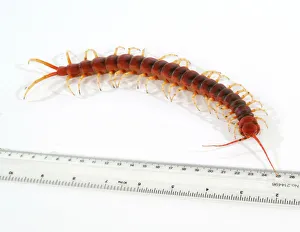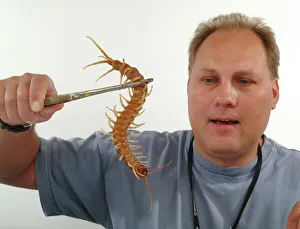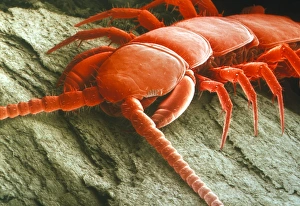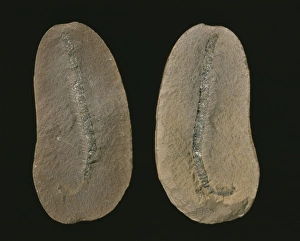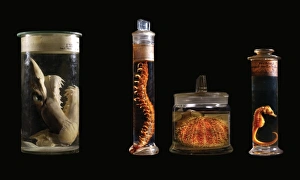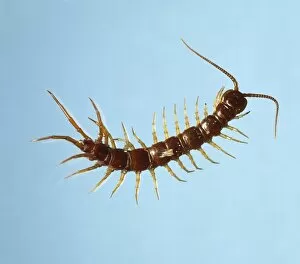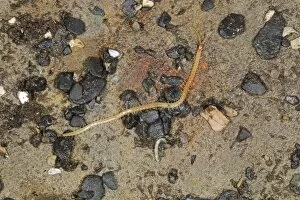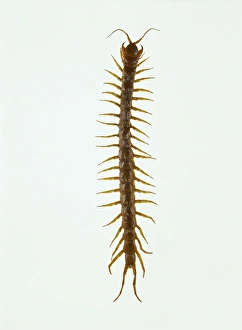Chilopoda Collection
Chilopoda, also known as centipedes, are fascinating creatures that have captured the attention of scientists and nature enthusiasts alike
All Professionally Made to Order for Quick Shipping
Chilopoda, also known as centipedes, are fascinating creatures that have captured the attention of scientists and nature enthusiasts alike. One notable species is the Scolopendra gigantea, commonly referred to as the giant centipede. Stuart Hine's encounter with this remarkable creature left him in awe, as he carefully held up a specimen for observation. Centipedes have been depicted throughout history, even appearing in an 1810-17 watercolor and manuscript text titled "The Centipedes;the Bronze Winged Dragon Fly. " These ancient depictions highlight the enduring fascination with these multi-legged arthropods. In a captivating black and white photograph from 1923 at London Zoo, we see a keeper delicately holding up a Giant Centipede. The image showcases both the size and intricacy of this incredible creature. One common species is the Common European Centipede (Lithobius forficatus), which can be observed up close. Its segmented body and numerous legs make it an intriguing subject for study. Models of upper torsos of Giant Tiger Centipedes provide us with detailed insights into their anatomy. With pairs of legs attached to each segment, venom claws behind antennae, and cross-sections revealing venom glands with ducts, nerves, and muscles – these models offer a glimpse into their complex physiology. The appearance of Giant Tiger Centipedes is equally striking. Their orange and black segmented bodies are adorned with antennae, four simple eyes, poison fangs, and clawed legs at the end of their abdomen – all adaptations designed for capturing prey while injecting potent venom. Observing Chilopoda from above reveals unique perspectives on their behavior. Whether it's witnessing one curl its back end or admiring an overhead view of a Garden Centipede (Lithobius forficatus), there is always something new to discover about these elusive creatures.

